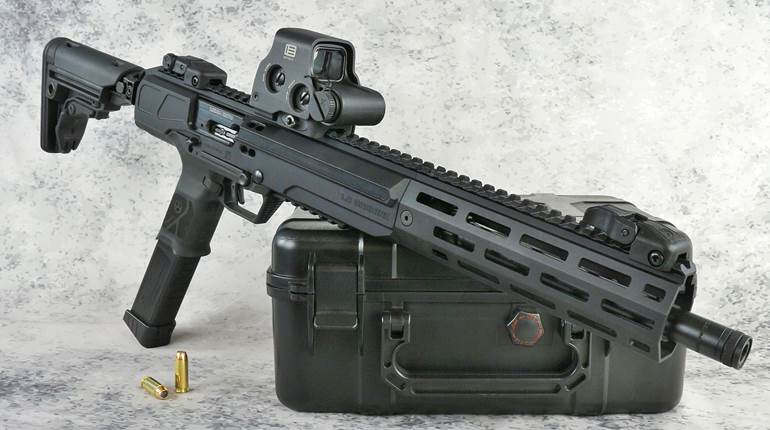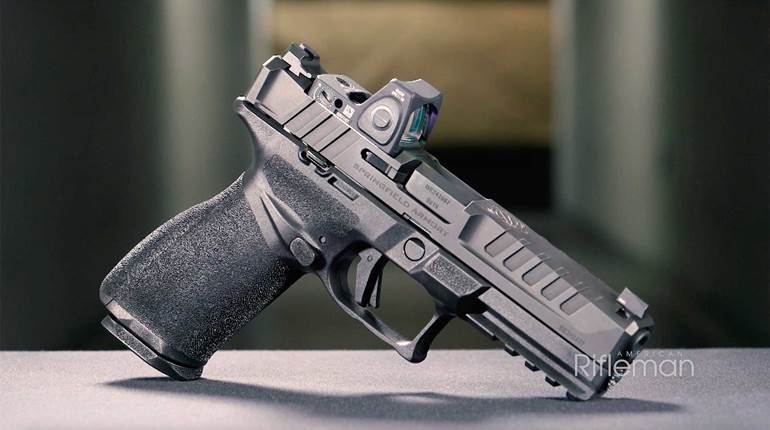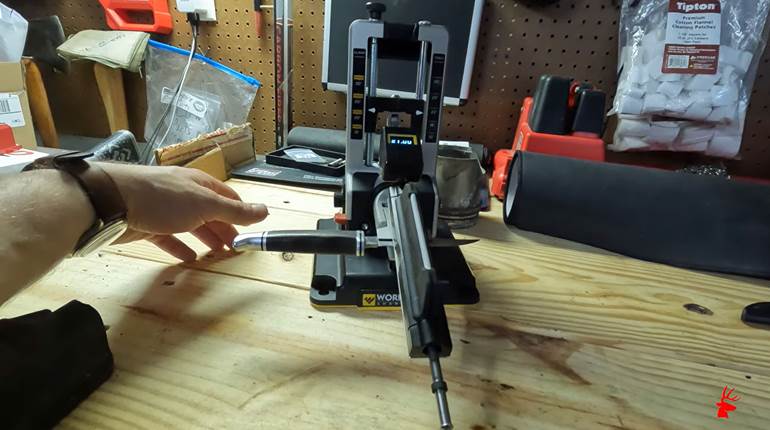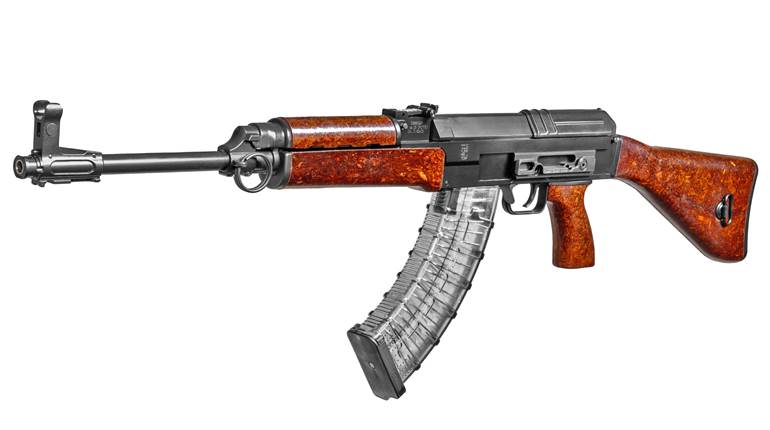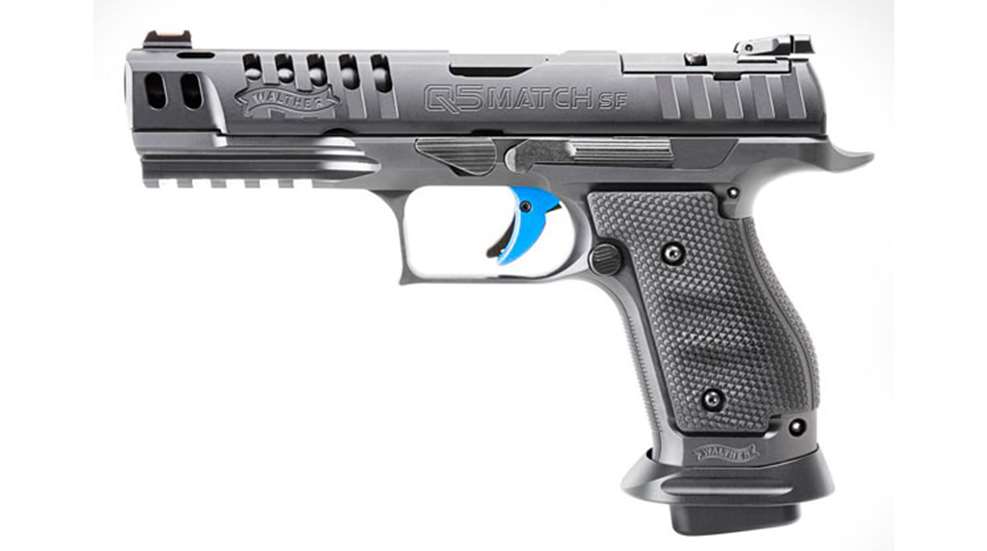
When Walther Arms set out to meet customers’ requests for a pistol intended for competition and sports shooting applications, the company was faced with a choice. On the one hand, Walther recognizes that high-quality, all-steel pistols reduce felt recoil and provide a feel and balance that polymer guns can't readily duplicate. However, polymer-framed competition guns can have quick handling characteristics due to their reduced weight along with the added benefit of costing less to produce. Rather than choose one over the other, Walther simply covered both bases by offering steel-frame and polymer-frame versions of the new Q5 Match 9 mm.
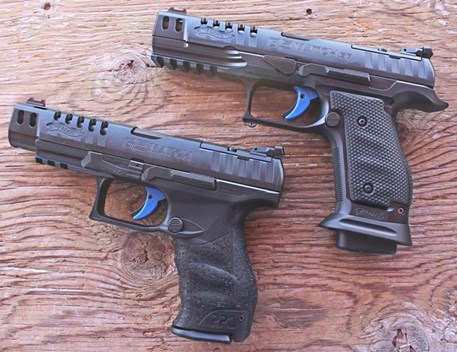
The company has plenty of experience with manufacturing steel-framed semi-automatics and Olympic-grade competition firearms. Thus it wasn't much of a stretch for Walther to design and execute the new striker-fired Q5 Match SF Pro with the features that competitors prefer. Rather than reinventing the wheel for the polymer version, the popular double-stack PPQ frame was employed. The result is a handsome pair of optics-ready pistols that share key features while exhibiting distinctly different personalities.
Let's start by taking a look at the features these pistols share in common.
Shared Features
The Q5 Match models are double-action-only, striker-fired semi-automatics with Browning-type tilting barrels. The pistols’ PPQ DNA is clearly evident in the beveled shape of the extended slide and the styling of the front and rear cocking serrations. The top strap is grooved to reduce glare and the ejection port is enlarged. A total of 16 weight-reduction vents line the top and sides of the slide in between the muzzle and the ejection port. These vents also help to cool off the barrel. The slide, barrel and internal components are all treated with the same durable matte black Tenifer finish.
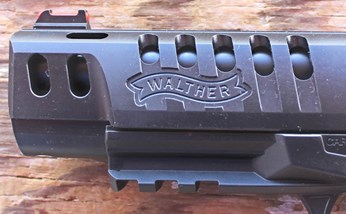
The front sight is a metallic housing which supports a red fiber optic and provides a square profile which neatly fits the notch of the fully adjustable rear target sight. The base of the rear sight is a removable filler plate that covers the section of slide that has been milled, drilled and tapped to accept an optic. The three additional slide plates shipped with each pistol can be used to mount red dot optic models produced by leading manufacturers including Trijicon, Leupold, and Docter.
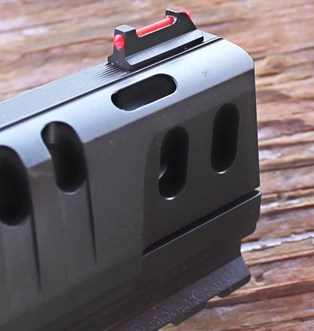
The 5" non-ported barrels are cut with six grooves of traditional rifling at a 1:10" right-handed twist. This allows for the use of all bullet types including the less expensive cast lead bullets favored by some competitors. The dust covers of the Q5 Match pistols feature integral MIL-STD-1913 Picatinny accessory rails for mounting light and laser modules. The front of the generous trigger guard is flattened and textured to form a finger rest. The ambidextrous slide stop lever is low profile but its extended length and texturing make it comfortable to reach and operate. The oversized polymer, round-button magazine release is reversible for right or left hand operation.
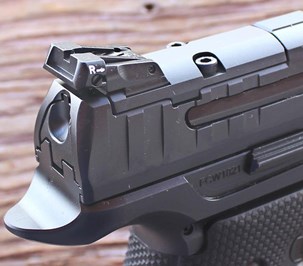
The distinctive blue coloring of the polymer Quick Defense (QD) triggers cause them to stand out from the rest of the pistols’ matte black finish. Sporting an integral safety lever, the QD has a short 0.4" arch of travel with a 0.1” trigger reset for quick follow-up shots. The triggers are listed as shipping with a 5.6-lbs. trigger pull but both of the pistols tested for this review had lighter triggers. The QD exhibits a two-stage feel, which is noticeably cleaner and easier to discern than some striker-fired models. The light take-up is followed by a distinctive resistance that breaks cleanly to fire the pistol. When the trigger reaches the reset point, it gives an audible and tangible click that's easy to recognize with a modicum of practice.
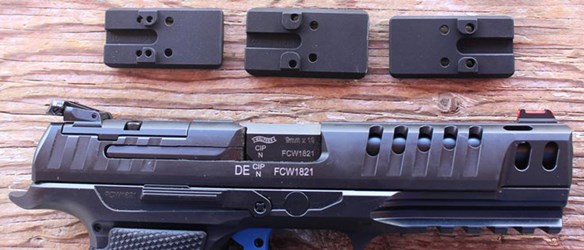
Q5 Match pistols ship with a ready-to-use accessory set which includes an organizer hard case, three blued steel magazines with red polymer followers, a set of tools and hardware for the optics plate set, a magazine loader, cable lock and an owner's manual. The bodies of the magazines are the PPQ M Series model with 15 numbered witness holes. However, magazine capacity and base plate types vary depending on the model.
Now let's take a look at what makes each pistol unique.
The Q5 Match SF Pro
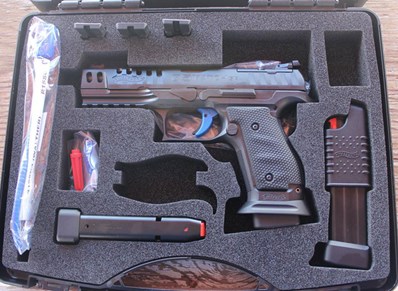
The all-steel Q5 Match SF Pro weighs in at 43 ozs. with an empty magazine inserted in the grip. With so much emphasis on reducing the weight of modern defensive pistols in order to make them easier to carry, some folks may wonder why an enthusiast would pick a gun that weighs nearly a pound more than the polymer-framed version. In the more athletic shooting competitions, including 3-Gun, IPSC and USPSA matches, participants move through a series of stages as quickly as possible. When a competitor's arms and hands are quivering due to an adrenaline rush or fatigue, the steel frame's added weight works to stabilize the pistol for more accurate shot placement. It also reduces felt recoil for faster follow up shots. In the case of the steel Q5, it produces modest levels of felt recoil when firing standard pressure loads.
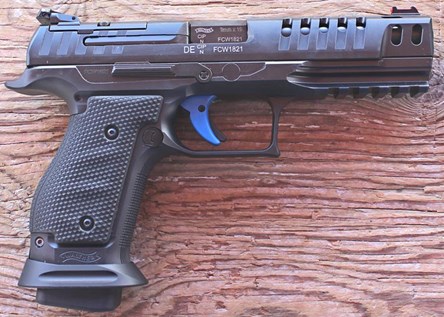
Muzzle taming weight can be found in the steel guide rod of the recoil assembly and the full-length dust cover with its stylishly cut 2.25" long five-slot accessory rail. In fact, the frame exhibits thoughtfully applied bevels and cut outs throughout in order to give it an eye catching appearance that defies the blocky look and feel of some competitors’ striker-fired pistols.
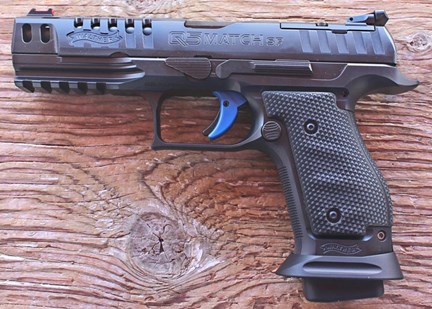
A rotating takedown lever is located on the left side of the frame, just above the trigger. Removing the slide reveals two sets of slide support rails which are milled into the frame. The front rails are 1" long and located directly above the trigger housing. The rear rails are 0.6" long. The trigger guard is undercut and rounded where it meets the grip frame. The portion of the frame surrounding the magazine release button is trimmed down to provide maximum access. A well rounded extended beaver tail protects the shooting hand from the reciprocating slide.
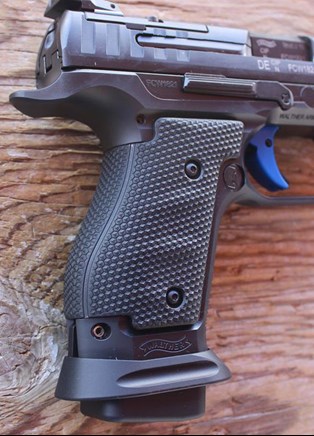
Unlike the polymer models, the steel grip frame does not have a removable back strap. However, it is comfortable to hold and sized to fit a variety of hand shapes including my somewhat smaller paws. The trigger guard finger rest and the front of the grip frame feature deeply cut fine line checkering for improved purchase. The textured polymer one-piece wrap-around grip panel, which is secured to the frame by four hex head screws, provides a more aggressive texturing than Walther’s polymer frame models. Paired with the checkering of the front strap, the wrap around grip panels provide plenty of purchase without being overly abrasive to bare hands.
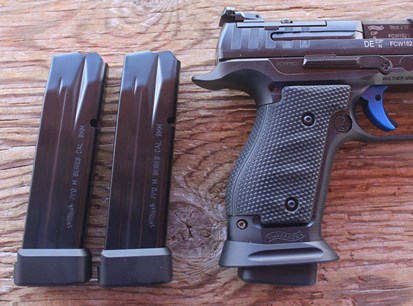
A flared aluminum magazine well extension looks right at home at the base of the grip frame.
It can be removed so that the pistol will meet regulations for certain pistol divisions. The three magazines provided with this version of the Q5 Match are fitted with extended aluminum block base plates that provide room for two additional rounds which brings the ammunition capacity up to 17+1. Standard flush-fit polymer base plates are not compatible with the magazine well extension.
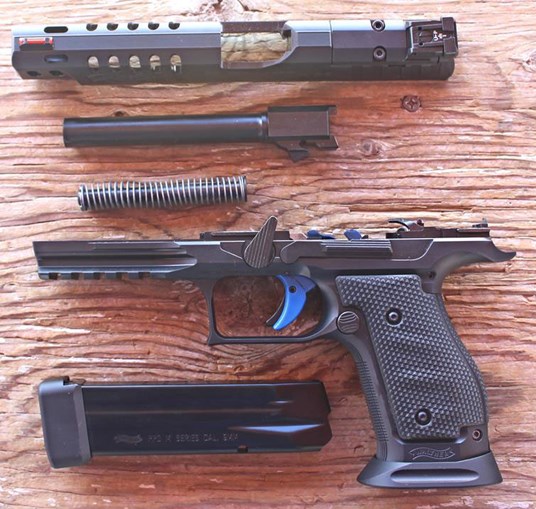
The Q5 Match
The polymer-framed Q5 Match tips the scales at 27.2 ozs. with an empty 15-round magazine. For this model, the weight has been reduced where possible. It sports a shorter three-slot accessory rail and a polymer guide rod for the recoil assembly. The magazine well extension has been excluded and the magazines are fitted with lighter, flat polymer base plates. Thanks to the weight reducing ports in the slide this version of the Q5 match handles more like a 3.5" or 4" gun rather than the 5" slide assembly with which it ships.
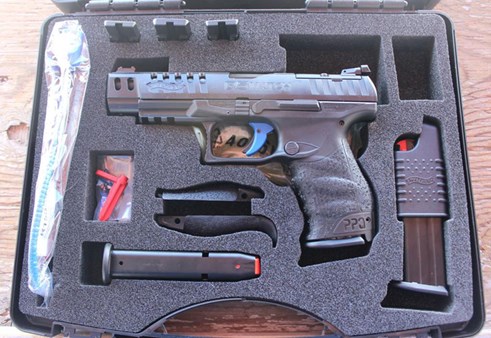
Felt recoil is similar to that of other 9 mm pistols in the same weight and size class. It’s not as mild as the steel pistol but still comfortable and controllable. Because the pistol weighs less it will feel more familiar to those who are used to working with polymer pistols. There's also a noteworthy shift in pressure on one's pocket book since this pistol costs almost half as much as the steel version.
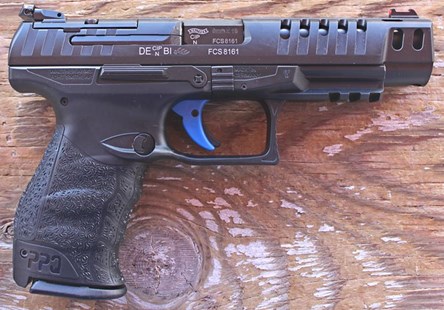
Although the cutouts and curves of the polymer frame are more subtle and rounded than those of the steel frame, there’s no mistaking the distinctive styling that makes Walther pistols stand out from the crowd. I fell in love with Walther's polymer grip shape and texturing while testing the PPQ M2 Q4 TAC in 2018. The Q5 Match frame shares the same feature set as the PPQ making for a welcome and familiar fit.
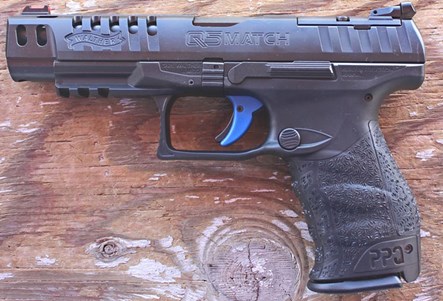
The grip frame is smooth and narrow directly behind the trigger housing to provide an easier reach for the trigger and magazine release. The polymer takedown lever is pulled down instead of rotated when dismantling the pistol for routine cleaning. As is common with polymer framed guns these days, the slide support rails are steel inserts which are 0.4 " long in front and 0.35" in back.
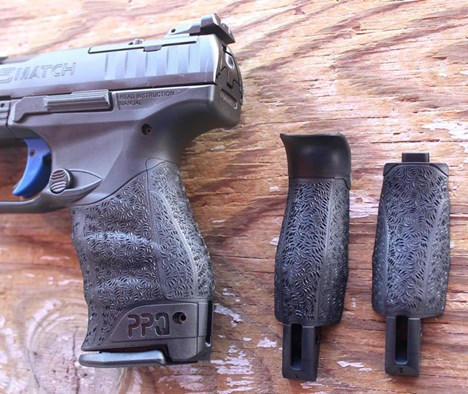
The trigger guard finger rest is grooved instead of checkered and the undercut where it meets the frame is not quite so deep. The frame has a small ridge that extends below the magazine release to reduce the chances of unintentional bumps that could drop the magazine at an inconvenient moment. The rear of the frame is squared off to match the tail end of the slide.
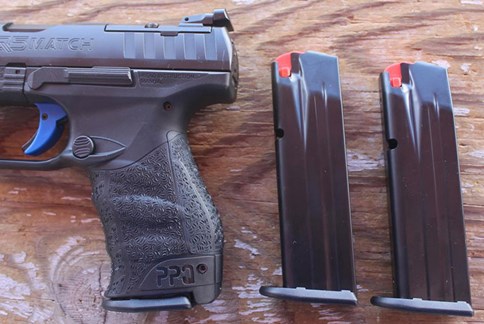
All four sides of the integrated grip surface feature the same non-abrasive, cross-directional texturing which is molded into the frame with subtle finger grooves along the front strap and the side panels. This model ships with a total of three interchangeable backstraps which can be exchanged by removing a pin at the base of the grip. This pin also serves as a lanyard connection point. The backstrap extends down behind the magazine base plate to prevent it from possibly pinching the shooting hand during recoil.
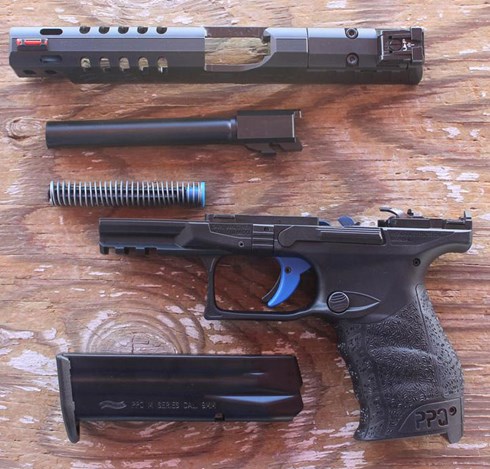
Range Time
At the shooting range, the slides and controls of the Q5s were both smooth and easy to cycle right out of the box. Although the steel and polymer grip configurations are different, they both were both comfortable to work with. Both models fed, fired and ejected reliably with nary a malfunction between them. They were utterly reliable with all ammunition from bulk-box practice grade to premium defensive hollow points.
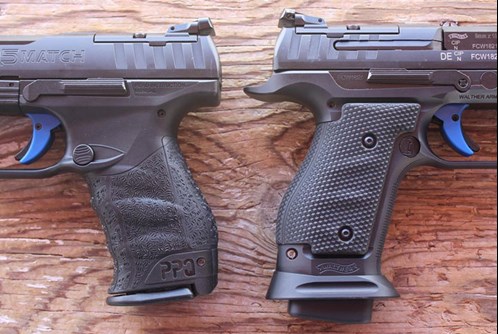
The steel frame trigger pull was 5 lbs. 2 oz. with a hint of roughness that smoothed out a bit in the course of testing. The polymer pistol's trigger was smooth right out of the box with a noticeably lighter pull of 4 lbs. 11 oz. Firing the same 3 Black Hills, SIG Sauer and Winchester loads of ammunition from the two pistols’ identical 5" barrels next to a Lab Radar chronograph, with the two 10-round strings taken from the same box, it was not much of a surprise that the velocity results were nearly the same for both guns.
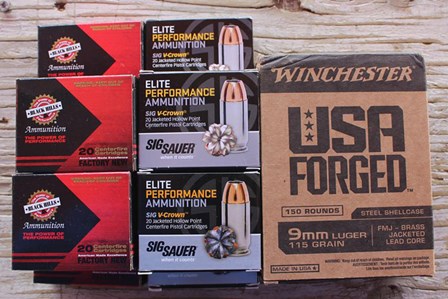
Going into the benchrested accuracy testing, I thought that the steel framed Q5 might print the tighter groups of the two due to its added weight. But that was not the case. There was less than a 0.25" variance between the two pistols’ group averages. Usually when I'm operating a benched semi-auto pistol using the iron sights at 25 yards, I can print 3" to 3.5" groups when I'm doing my job correctly. Group sizes consistently under 3" are a good indication that the gear is out shooting the shooter.
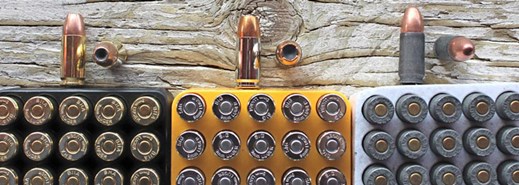
With formal accuracy testing completed, I broke away from the bench in order to get a feel for how these pistols handle from a two-handed shooting position. The iron sights were quick to acquire and a pleasure to work with. Even though the degree of recoil for each pistol was different, they both kept steel plates ringing and tipping with a metronome's consistency. The only limits I found to the Q5s' potential for enjoyment were the amounts of ammunition on hand.
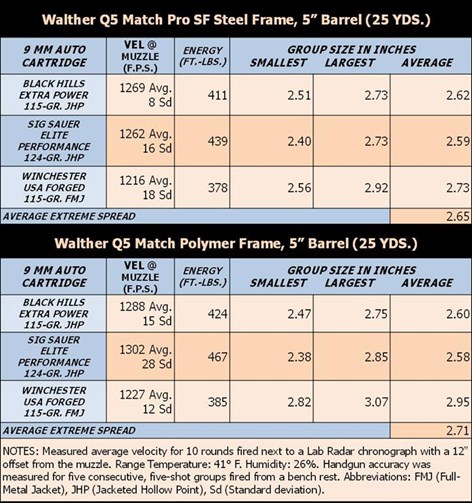
Parting Thoughts
When folks talk about high quality firearms such as Walther's Q5 Match offerings, it's not uncommon to hear a good deal of marketing lingo bandied about. Tradition of excellence, German engineering, ergonomically designed and so forth. But I believe that the positive handling characteristics of a well made competition platform can be measured with a fairly straightforward question: Did you focus more attention on operating the gun or enjoying the event?
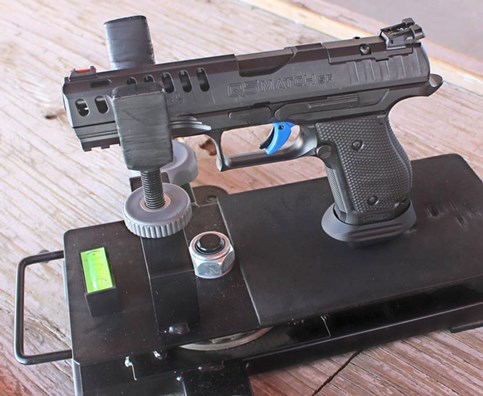
Low quality or ill-fitting pistols will keep distracting competitors and shooting enthusiasts from the task at hand with uncomfortable grips, mediocre sights, sticky controls and slip-shod accuracy. Good pistols reduce these distractions, but may not eliminate them. Quality guns, like the pair tested here, fit so well and run so reliably that they support an enjoyable experience rather than being a detail that has to be dealt with.
I noticed these qualities in the Walther PPQ last year and I'm happy to report they have been successfully duplicated in the Q5 series race guns. It may sound like a simple thing to say on the surface but it's one of the best complements I can pay to a product I like: Walther's Q5 Match pistols get out of the way and let folks enjoy their trigger time.
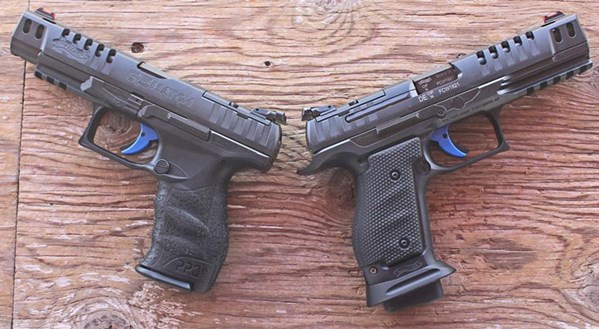
Specifications
Manufacturer: Walther Arms
Model: Q5 Match SF Pro (2830418)
Action: Double-Action Browning Type Tilt Barrel Semi-Automatic
Ignition System: Striker-Fired
Caliber: 9 mm
Slide: Optics Ready, Weight-Reduction Porting, Front and Rear Cocking Serrations
Slide Finish: Matte Black Tenifer
Barrel: 5" Match-Grade, Tenifer Finish
Frame: Machined Carbon Steel, Tenifer Finish
Accessory Rail: 2.25" 5-Slot MIL-STD-1913 Picatinny
Front Sight: Red Fiber Optic with Metallic Housing
Rear Sight: Competition, Fully Adjustable
Slide Release: Low Profile Extended, Ambidextrous
Magazine Release: Round Button, Reversible
Trigger: Quick Defense with Integrated Safety
Trigger Pull: 5 lbs. 9.25 oz. (Listed), 5 lbs. 2 oz. (As Tested)
Magazine Well Extension: Hard Anodized Aluminum, Black
Barrel Length: 5"
Overall Length: 8.7"
Height: 5.9" with Extended 17-Round Magazine
Slide Width: 1.1"
Grip Width: 1.4"
Weight: 43 oz. with Empty 17-Round Magazine
Capacity: 17+1 Rounds
Twist: 1:10” RH
Rifle Grooves: 6
Accessories: Three Optics Mounting Plates with Tools and Hardware, Three Magazines, Magazine Loader, Hard Case, Lock, Owner's Manual
MSRP: $1650
Model: Q5 Match (2813335)
Action: Double-Action Browning Type Tilt Barrel Semi-Automatic
Ignition System: Striker Fired
Caliber: 9 mm
Slide: Optics Ready, Weight-Reduction Porting, Front and Rear Cocking Serrations
Slide Finish: Matte Black Tenifer
Barrel: 5" Match-Grade, Tenifer Finish
Frame: Textured Black Polymer with Interchangeable Backstraps
Accessory Rail: 1.9" 3-Slot MIL-STD-1913 Picatinny
Front Sight: Red Fiber Optic with Metallic Housing
Rear Sight: Competition, Fully Adjustable
Slide Release: Low Profile Extended, Ambidextrous
Magazine Release: Round Button, Reversible
Trigger: Quick Defense with Integrated Safety
Trigger Pull: 5 lbs. 9.25 oz. (Listed), 4 lbs. 11 oz. (As Tested)
Barrel Length: 5"
Overall Length: 8.7"
Height: 5.3" with Flush-Fit 15-Round Magazine
Slide Width: 1.1"
Grip Width: 1.3"
Weight: 27.2 oz. with Empty 15-Round Magazine
Capacity: 15+1 Rounds
Twist: 1:10” RH
Rifle Grooves: 6
Accessories: Three Optics Mounting Plates with Tools and Hardware, Three Grip Inserts, Three Magazines, Magazine Loader, Hard Case, Lock, Owner's Manual
MSRP: $849














